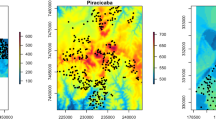Abstract.
A rule-based model for managing uncertainty in spatial databases is presented. The overall goal of the model is to allow a user to assign to a single map class each polygon whose class is not entirely certain using more information than only the map class attributes of such polygons (that are herein termed abjects). This situation might arise when multiple map realizations of an area are available and interpreters/cartographers are not in agreement as to what class is present at a given location or when a digital image is classified by algorithmic/probabilistic means. The scale-based model developed relies on attribute, geometric, and neighborhood measures of abjects arranged in a hierarchical rule-based structure. Structural knowledge of these measures leads to the procedural knowledge that determines what action – e.g., merge, reclassify, retain – is to be taken for a given abject. The wider applicability of the model and associated methodology is also discussed.
Similar content being viewed by others
Author information
Authors and Affiliations
Additional information
Received: 5 July 2001 / Accepted: 11 April 2002
Rights and permissions
About this article
Cite this article
Allan, R., Lowell, K. Managing spatial uncertainty using attribute, geometric, and neighborhood measures in an empirical rule-based model approach. J Geograph Syst 4, 141–156 (2002). https://doi.org/10.1007/s101090200085
Issue Date:
DOI: https://doi.org/10.1007/s101090200085




